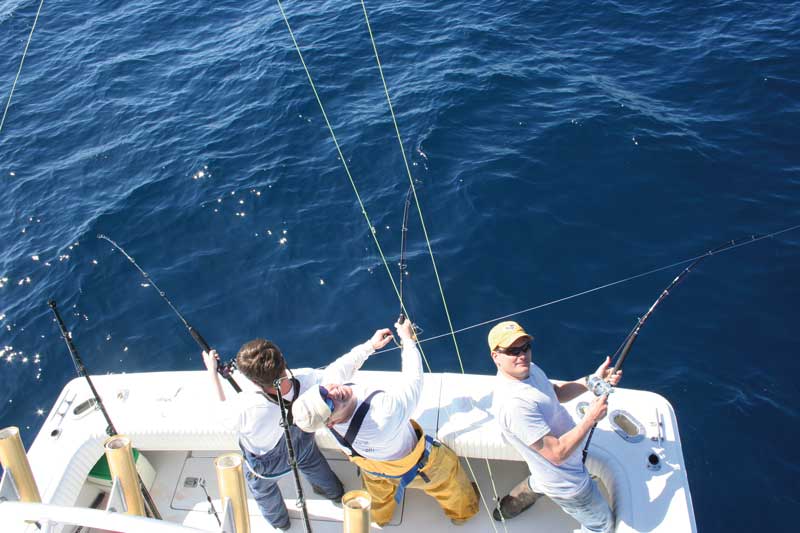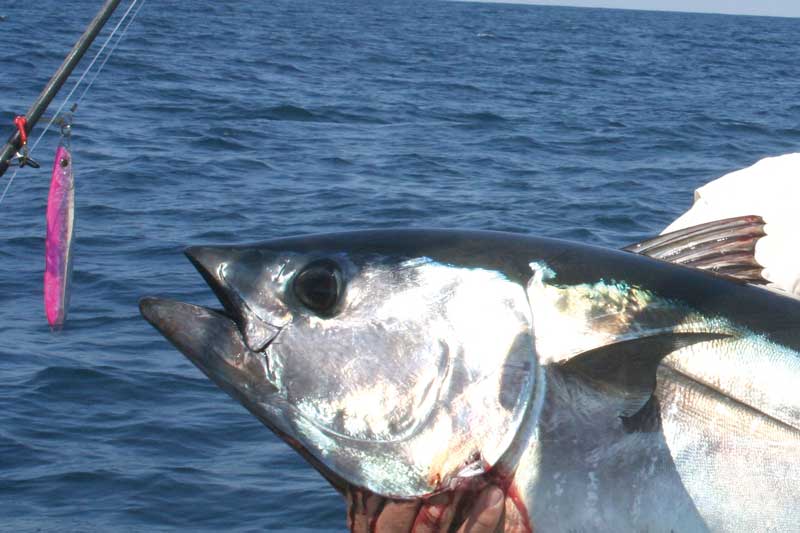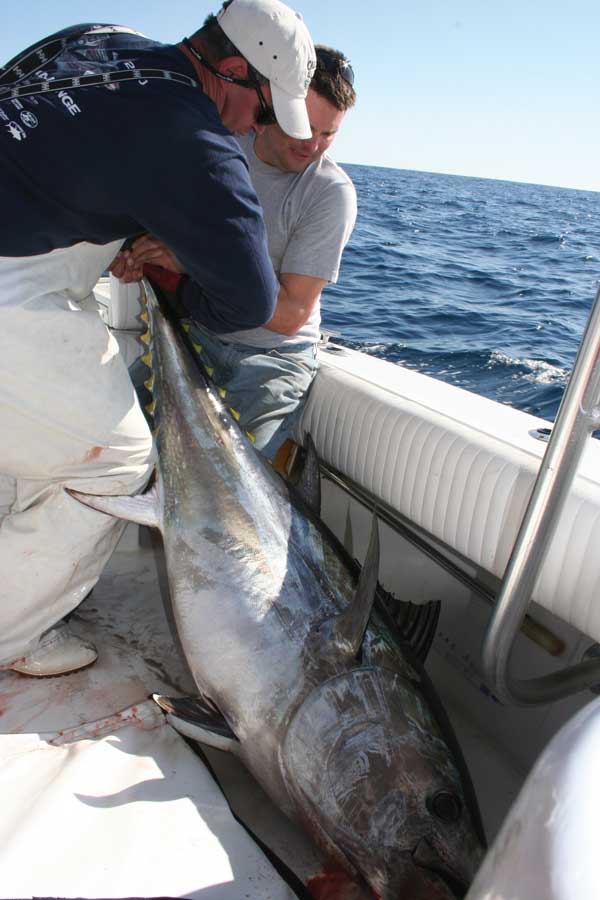The winter bluefin fishery off North Carolina’s Outer Banks is one big, giant roll of the dice from season to season – some years it’s red-hot, and others it’s not. Some seasons it begins by the time this issue will have hit the streets, and other seasons it doesn’t crank up until March. The big bluefin may be found off Oregon Inlet, or they may be farther down the coast off Southport. Quite regularly you and everyone else knows exactly where the fish are, but weather holds the boats at the dock for weeks on end. And some winters, they simply don’t ever show up to provide a stable fishery.

Yes, winter bluefin fishing off the North Carolina coast is a game of chance. But when you roll those dice and they come up natural, the payoff can be a battle with the fish of a lifetime.
Tuna Tactics
For many anglers, one of the best aspects of winter bluefin fishing is that is can be effectively done with relatively light gear via speed-jigging, and occasionally even on topwater. Most folks will agree that 50-pound gear is slightly under-gunned for many of these fish, which commonly run several hundred pounds and on occasion even larger. The NC state record sits at 804 pounds, but in late January of 2015 a 1005-pound bluefin was caught by commercial hook-and-line anglers just three and a half miles from Beaufort Inlet.
While it will present a challenge, modern jigging rigs with high-speed conventional reels spooled with 65-, 80-, or 100-pound braid can handle most of the fish you’re likely to encounter, and these fish are more than willing to slam a Butterfly-style jig in the five- to nine-inch range (pink and blue/white mackerel patterns are often killers), zipped through the water. A few high-end spinning rigs fall into the just-capable category and can be used with either jigs or big surface poppers. Either way, the rods and reels used for this technique in essence represent the ultimate light-tackle big-game challenge.

Though jigging with this “light” gear may be the most fun, trolling is usually the more effective method. Pulling horse ballyhoo, some skirted and some not, on 80s and 130s is the norm. At least one line – and usually more – get rigged with the classic blue/white Ilander (which, incidentally, is what those commercial guys caught the 1005-pounder on).
Even on dedicated jigging trips, the day usually starts out with trolling lines deployed in order to locate the schools of fish. Once the general area has been ID’d with a knock-down or two, the captain can begin looking for closely grouped, jig-able marks on the fishfinder. He or she then shifts into neutral, calls out the target depth, and the jigs get dropped overboard. Once they’ve passed below the target depth, they get cranked back toward the surface at high speed. (There are some finer points to the technique, of course; for more in-depth info on speed jigging we’d recommend picking up Lenny Rudow’s book “Modern Jigging” or his e-book “Rudow’s Guide to DelMarVa Inshore & Offshore Fishing,” available at smashwords.com).
Motion of the Ocean
Can you tow your own boat down to NC, and take a shot at these big bruisers on your own? Of course you can. There are, however, a number of concerns to be dealt with. First and foremost is safety. In this area of the world the wind blows quite often during the winter, and rough seas are the norm. All of your safety gear and the boat itself must, must, must be in 100-percent ideal condition. Now add in the fact that the NC inlets are riddled with shifting bars and unreliable markers. Even the professionals run aground here sometimes, and in a rough inlet that can be absolutely deadly. If you don’t have plenty of previous experience in the area or the friendship of a local you can follow through the inlet both at the beginning and the end of the day, we DO NOT recommend blindly attempting a foray into the ocean from any of the NC ports. A single storm can shift these channels around, and you simply can not rely on staying between the reds and the greens.

Additionally, consider that this is cold-water fishing in the middle of the winter. Many of us haven’t run our boats regularly through the winter, and the first trip after a lay-up is usually when something goes wrong – a pump fails, an engine doesn’t start, or the electronics blink out. Off the Carolina coast in the middle of the winter is definitely not where you want this to happen.
Considering all of the above the vast majority of the anglers who take a shot at winter bluefin do so on a charter boat. This isn’t a problem, since there are plenty of charters up and down the NC coast.

In order to get the trip you’re hoping for, however, a discussion with the captain prior to booking is in order. Many of them will want to troll, period. Some will be a bit more open-minded depending on how the bite has been, and some are willing to fish however the party would like. There are many excellent NC captains who care first and foremost about providing you with the experience you desire, but there are also some who seem to care more about bragging rights and out-fishing their slip-neighbors than anything else. Verify that the trip will be the one you want, prior to booking.
Fishing is always a gamble, and winter fishing on the ocean is even more dicey than most other options. Just for the record, I scheduled four NC winter tuna trips before even getting off the dock, thanks to bad weather. The fifth trip produced one 30-pound blackfin and a big kingfish. But the sixth trip consisted of wide-open-throttle battles with bluefin between 60 and 300 pounds, all (except the first) on light gear, for a six-hour stretch. Every once in a while you hit the jackpot – and in this fishery, that means the battle of a lifetime.
Sign up here to get the weekly FishTalk Chesapeake Bay and Mid-Atlantic fishing reports in your email inbox, every Friday by noon.